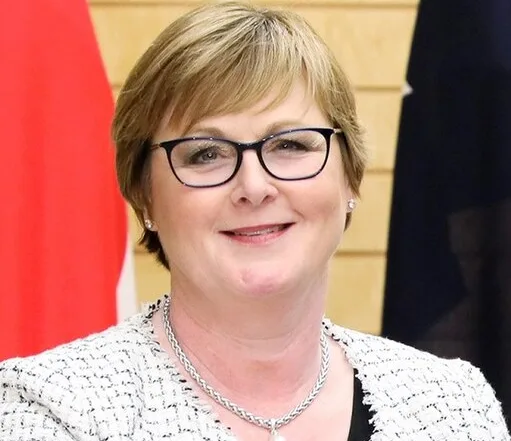The high-profile defamation trial between Senator Linda Reynolds and Brittany Higgins has seen dramatic turns, including emotional testimonies and significant courtroom revelations
The defamation trial between Senator Linda Reynolds and Brittany Higgins has captured intense public and media interest over the past month. The courtroom drama, unfolding before Justice Paul Tottle, has highlighted key moments that have significantly impacted both parties and the broader public discourse.
Senator Linda Reynolds, who sued former staffer Brittany Higgins for defamation, claims that Higgins’s social media posts caused substantial harm to her reputation. These posts, now deleted, accused Reynolds of mishandling Higgins’s rape allegation, harassing her, and attempting to silence sexual assault survivors. The case focuses not on the rape allegation itself but on the aftermath and the handling of the situation.
Embed from Getty ImagesOne of the most striking moments of the trial came when Reynolds’s lawyer, Martin Bennett, opened the case by portraying Higgins as fabricating a “fairytale” narrative. Bennett argued that Higgins’s portrayal of Reynolds as a villain in a political cover-up was part of a deliberate attempt to destroy Reynolds’s career. In response, Higgins’s lawyer, Rachael Young SC, condemned this framing as “misplaced” and “re-traumatizing,” asserting that Higgins’s experience was far from a fairytale.
The emotional weight of the trial intensified when Senator Reynolds took the stand for five days, delivering a tearful account of the personal toll the allegations had taken on her. Reynolds described feeling “nationally vilified” and detailed the severe impact on her mental and physical health. She even controversially suggested that the stress surrounding Higgins’s allegations contributed to the death of Labor senator Kimberley Kitching in 2022, prompting Justice Tottle to caution her against attributing motives to others.
Former Prime Minister Scott Morrison’s testimony added another layer of drama. Morrison defended Reynolds’s handling of Higgins’s allegations, asserting that the former defence minister had acted appropriately. His combative style in the witness box, often talking over Justice Tottle and displaying his characteristic assertiveness, underscored the high stakes of the case. Morrison claimed that Higgins had exploited the issue for political gain and that Reynolds’s removal from the defence portfolio was due to her health, not any alleged misconduct.
A significant development occurred when Higgins’s lawyer announced that Higgins would not testify in person due to health issues preventing her from travelling from France. Instead, the court reviewed medical reports and relied on evidence previously given by Higgins in related trials. Reynolds’s team criticized Higgins’s absence, arguing that it showed arrogance and a lack of commitment to the trial process.
In her final submission, Young argued that Reynolds had chosen the “wrong target” in Higgins. Young contended that Reynolds’s attempt to restore her reputation by blaming Higgins was misplaced, highlighting the severe burden Higgins carried as a survivor of a serious crime. Young described Reynolds’s evidence as unreliable and self-serving, emphasizing that Higgins bore the brunt of the aftermath of the alleged rape.
Analysis:
Political: The Reynolds-Higgins defamation trial has significant political ramifications, particularly in the context of how public figures handle allegations of misconduct and defamation. The case has spotlighted the intricate relationship between personal and political reputations, revealing how political figures navigate allegations that impact their careers and public image. The involvement of high-profile politicians, including Scott Morrison, underscores the trial’s broader political stakes, reflecting the tensions between political accountability and personal reputations.
Social: The trial has highlighted societal debates surrounding the handling of sexual assault allegations and the consequences of defamation. By focusing on the aftermath of Higgins’s allegations rather than the alleged assault itself, the case has intensified discussions about how survivors are treated and the impact of public allegations on individuals’ lives. The emotional testimonies and courtroom revelations have resonated with societal concerns about victimization, public scrutiny, and the complexities of navigating high-profile allegations.
Racial: While the trial primarily centres on the defamation claims between Reynolds and Higgins, it intersects with broader discussions about racial dynamics in public life. Although the case does not directly address racial issues, it reflects how public figures from diverse backgrounds deal with allegations and media scrutiny. The lack of explicit racial elements in the trial does not diminish its relevance to discussions about representation and the treatment of individuals in the public eye.
Gender: Gender plays a crucial role in this trial, as it deals with allegations of sexual misconduct and the gendered nature of defamation. The case underscores the challenges women face when making allegations of sexual assault and the scrutiny they endure. Higgins’s accusations and Reynolds’s defence highlight the gendered dynamics of power, victimization, and reputational damage, reflecting broader societal issues related to gender and the treatment of sexual assault survivors.
Economic: The economic implications of the trial extend to the reputational and financial impact on the individuals involved. For Reynolds, the defamation case represents an effort to restore her reputation and mitigate the professional damage caused by the allegations. The trial’s outcome could influence her future career prospects and financial stability. For Higgins, the economic impact is less direct but includes the costs associated with legal proceedings and the broader implications for her public and professional life.
